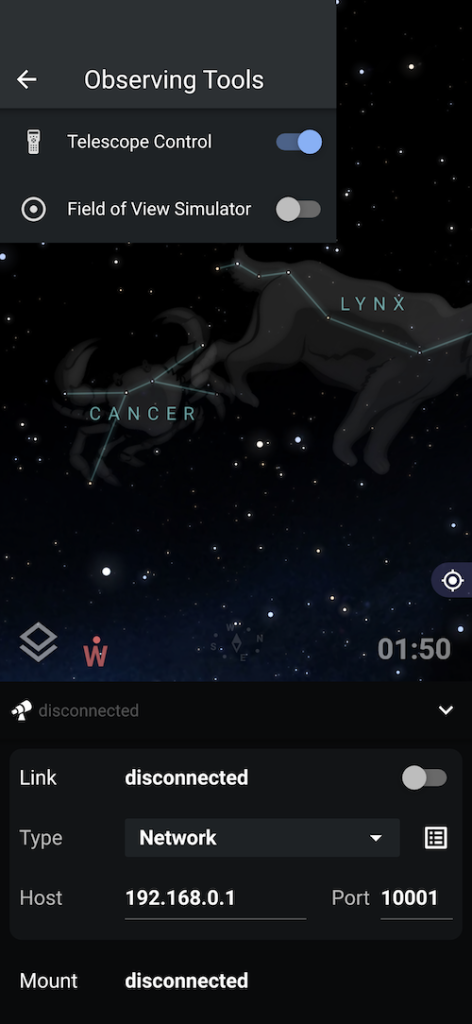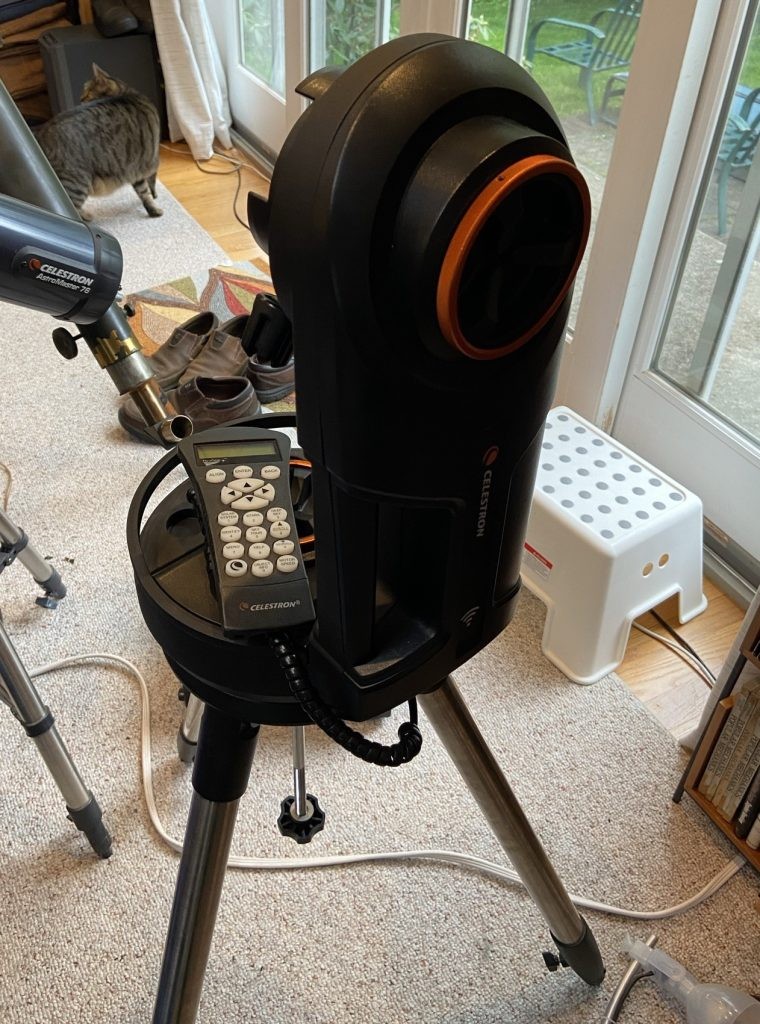Smartphone-controlled telescopes have become very popular in recent years.
The Period of Hand Controller Only GoTo Telescopes
Older GoTo telescopes were controlled by hand controller keypads, which are frustrating to learn to use at first and they don’t show me exactly where I’m in the sky. This is a problem when I’m trying to observe multiple objects and want to stay in the same area of the sky; the keypad cannot tell me this information or convey it in a useful manner. So I end up having to consult a star chart anyway, which kind of defeats the point of a GoTo telescope.
WiFi Dongles To the Rescue
Most newer GoTo telescopes made after around 2005 can at least accept a dongle to allow connection to a smartphone.
The Celestron SkyPortal, Meade Stella, and SkyWatcher SynScan Mobile adapters are brand-specific to their respective telescopes, while others like the SkyFi 3 and StarFi are more universal.
You can also build your own adapter/dongle with relatively basic electronics knowledge, as they are little more than a board with a small WiFi signal and some basic connection protocols.
Using a WiFi dongle with an existing telescope usually means unplugging the hand controller. After this, we control our telescope with an app. All of the telescope manufacturers have free apps, but I find all of them to be either basic buttons or simply stripped-down copies of apps like SkySafari. Using SkySafari or Stellarium gives me a lot more functionality and a better interface when controlling my telescopes.

The Usage of Position Encoders in GoTos
I’ve also used many telescopes with built-in Digital Setting Circles (DSC) that send position information to my smartphone.
These allow me to find objects in the sky and see where my telescope is pointed in real time. As with GoTo instruments, upgrading older DSCs to a WiFi-enabled system usually just involves getting a newer control unit, which may have an analog keypad as a backup like the Nexus DSC. Purely WiFi-only kits and homemade designs are also available.
The Celestron StarSense Explorer telescope/app technology and similar technologies like the AstroHopper app go a step further by eliminating the physical position encoders in our telescope’s mount and using the smartphone’s camera and gyroscopes to find the telescope’s position in the sky.
Introduction and Growing Popularity of Built-in WiFi GoTos
Fully motorized GoTo telescopes with built-in WiFi adapters are also becoming more common. This is in part due to supply chain shortages, particularly with semiconductors, as well as a cost-cutting measure to ditch the hand controller.
Sky-Watcher’s telescopes and mounts pretty much all come with WiFi adapters as a default with newer models, such as the Virtuoso GTi and newer FlexTube SynScan Dobsonians, as well as the EQ-6Ri, AZ-GTi, Star Adventurer GTi, and Star Adventurer 2i mounts. These also all allow me to move the telescope/mount freely around the sky without disrupting the alignment of the GoTo system.
Celestron’s Astro-Fi and NexStar Evolution telescopes are controlled via our smartphone. But they do not feature the ability to aim the telescope manually at all, which I think is a bit of a drawback.

